
Nowadays, the world is facing the accelerated development of science and technology and is in one of the phases that we often call the phases of revolutionary change. We find similar examples earlier in history. The development of technology and means of production was not even. Periods of accelerated development and relative stagnation alternated. The most famous leap in development, known as the Industrial Revolution, occurred in the late eighteenth and early nineteenth centuries. It began in 1733 with the advent of the mechanized weaving loom. The next great invention was the steam engine (1769), and then came the rapid development of technology and means of production, hence the name of the industrial revolution. Historically, there are still several discoveries and scientific achievements that have significantly marked the technical development of the world in certain periods. We will mention the discovery and later use of atomic energy, as well as the discovery of the transistor that enabled the rapid development of electronics. We are witnessing the accelerated development of science and technology. The development of science and new technologies, in the opinion of many, suggest qualitative changes in the field of production and society in general. The rapid development of computer and communication systems enables a marked increase in the flow of information, and high automation in industry is increasingly putting a man in the position of only supervising production. Realizing the importance and perspectives of these processes, developed countries are allocating more and more funds for scientific research and the development of high technologies. Of course, large investments significantly accelerate development processes. It seems justified to talk about a new technological revolution and the transition of developed countries into a new era of post-industrial society. One of the important factors of the new revolution is flexible automation, the non-separable part of which is robotic systems. The idea of robots originated first in science fiction. Even today, in discussions about robotic systems and everything they bring, we can hardly avoid visions from the field of science fiction. Of course, we look at robots much more practical today, because the level of technical development allows us to do so. These are very complex devices that could have appeared when those branches of science on which today's robotics is based developed: machine theory, automatic control theory, computer technology, so-called methods. artificial intelligence, as well as sensor and transducer technology. Today, we look at robots as devices that enable further and more flexible automation. They replace a person primarily in dangerous, monotonous, and difficult jobs. Man is left with jobs that require more intelligence, knowledge, and creativity. Thus, robotic systems contribute to both increased productivity and humanization of work.
1.1. Why robots?
In this section, we will point out some of the areas of technology and production whose development significantly influenced the emergence and improvement of robots in the sense that these areas of technology simply required robotic devices.
One such area is nuclear technology. This is done with radioactive materials and in areas exposed to radiation, for example when assembling and dismantling the elements of a nuclear reactor or intervening in cases of accidents at nuclear installations. To solve these problems, copying manipulators were first developed (Fig. 1.1.). They enabled the human operator, standing in a safe zone, behind a firewall, to handle radioactive substances. He runs the so-called manipulator control mechanism with his hands. The actuator located in the danger zone copies this movement and thus performs the desired action.
For various complex operations at nuclear facilities, mobile manipulators (on wheels or caterpillars) were later developed, which were controlled remotely based on a television image recorded by a camera mounted on the vehicle (Fig. 1.2). A similar problem of working in inhospitable environments occurs when examining the underwater world at greater depths, as well as during space research. For tests in the depths of the ocean, special vessels are constructed, with or without a crew, equipped with manipulators.
Robotic systems are already used in space research today. Thus, the American shuttle rocket plane is equipped with a manipulator for placing or capturing satellites (Fig. 1.7), and an even wider application of manipulation robots is expected when the assembly of larger orbital stations begins.
Robotic devices are already being used to explore other planets. In 1970, the Soviet probe Luna-17 landed an automatic vehicle Lunokhod-1 on the Moon, which performed a series of tasks moving on the surface of the Moon. The American Viking probe, which softly landed on Mars, was equipped with a manipulator that took samples of Mars soil and put them in a device for chemical analysis. Unlike the previously mentioned manipulator devices that were directly controlled by a man-operator, such devices that are sent to other planets must have great independence in work due to the complex problem of long-distance communication. The constant pursuit of increasing the productivity of industrial production has led to increasing automation. The man was first replaced by simple jobs that could be done by a simple industrial manipulator-automaton. It was mainly moving materials and machined parts, and later servicing machines. Figure 1.3 shows the manipulator that serves the press. Such work is dangerous. Workers can be injured, which is another reason for a person to be replaced in such jobs. With the advancement of science and technology, manipulators also improved and were able to perform increasingly complex tasks. today's very complex manipulators, which we call robots, perform many jobs in the industry, and the first fully robotic factories have already been built. Somewhere they are called factories without people, however, man is present here as a controller, but no longer of individual machines, but the complete production process. A special advantage of robotic systems in the industry is their adaptability-flexibility. It is about the possibility of a simple transition from one job to another, and thus easy adaptation to changes in production. Thus, the robots significantly influenced the formation of the so-called flexible production systems - an oduction that allows a quick change of assortment and economical work in small series. Robotic systems are also used in medicine. Medical robotics is an area that is characterized by several specifics. The main characteristic of medical robots, which largely determines the overall development, is that these are the only robotic devices that man wears. They do not replace a person in given jobs but replace or move parts of the human body in everyday life. These devices are divided into two main groups: prostheses and orthoses. Prostheses are devices that replace missing organs or parts of the body. The orthosis, on the other hand, has the task of moving the part of the body that exists, but due to illness or injury, it cannot move on its own. The prosthesis must be of such a construction that it corresponds to the shape of the part of the body that it replaces. From the former wooden legs and the hook that replaced the missing fist, there were leg prostheses that are powered by motors and artificial fists that enable complex movements. In Figure 1.4. an arm prosthesis and an artificial fist are shown. Thus, a hand prosthesis is, in fact, a specific manipulator. The specificity is reflected in the form of construction and the way of management.
Modern orthoses are devices that allow a patient with immobile parts of the body to move and make life easier. They are equipped with motors with a special way of control. It could be said that an orthosis is an external skeleton for an immobile part of the body. One such orthosis for moving the arm is shown in Fig. 1.5. It should also be said that lately, from the concept of the external skeleton, whenever possible, we are moving to a modular concept. Orthoses are made for certain parts of the body, but only as much as is necessary while trying to make the most of the patient's existing motor functions. Closely related to this are the methods of so-called electrostimulation of muscles, however, it is already out of the domain of robotics. And from the point of view of management, medical robots are characterized by some specifics. Unlike industrial robots, which perform periodic repetition of certain actions, medical robots should move depending on the human will. Therefore, some ideas are explored on how the user of the device can initiate a prosthesis or orthosis by some voluntary actions.
We will say something about the application of robotic systems in transport. The problem occurs with transport on very irregular terrain. Off-road vehicles cannot move on such terrain, and the ease with which humans or animals overcome them is noticeable. Hence the idea of constructing a transport vehicle that would have legs instead of wheels. This need fit into Initial research in the field of robotics. Namely, the first scientific research in robotics began as attempts to realize an artificial gait. Four-legged, six-legged, and eight-legged machines were experimented with. There have been several attempts to adapt such experimental machines to practical applications. However, it has not succeeded in that until today, although it should be said that work is underway on several projects that have yet to show results. One of the projects that have a chance to be confirmed is shown in Figure 1.6. It is an American prototype of a six-legged transport vehicle. The needs for robotic systems are much higher than we could show here because it is a very modern type of automation that provides great opportunities. The aim here was to point out the basic fields of application of robots and those practical problems that encouraged the development of robotics.

1.2. Robots and science
In any discussion of robots, science fiction is an unavoidable topic. There is a strong enough reason for that. Viewed through history, good writers of science fiction have very successfully predicted the development of science and technology in many fields. So it was with robotics. Robots were first mentioned around 1920 in the science-fiction drama by the Czech writer Karel Čapek called "R.U.R." (Rossum universal robots); therefore, some forty years or more before the first real robotic devices appeared. Čapek writes about mechanical people - robots who are endowed with high intellect and exceptional physical abilities. His vision is gloomy because bots, designed to replace living people in factories, free themselves from human control and begin to destroy their creator. That's how it started, and later many science fiction writers dealt with similar topics countless times. In the discussion of science fiction, we should also mention the famous series of films "Star Wars" and the robots R2D2 and C3PO that appear in them (Fig. 1.7a1). Science fiction writers look at robots differently. Some see them as devices that will help a person, free him from all difficult and uninteresting jobs and thus make his life easier and more creative. Other writers, on the other hand, see this as a danger and an opportunity for a person, freed from a series of jobs, to embark on a path of negative evolution and degeneration. After this trip to science fiction, let's return to reality, and at the beginning let's look at what the idea of science fiction has the possibility to realize shortly. We will compare some of the known ideas with some real projects. Of these actual projects, some have experienced practical application, and some have remained as experimental devices. The comparison is shown in Figure 1.7, and the reader is left to conclude what is fiction and what is reality. We made the comparison only based on a few examples, however, and a more serious review would show that many devices that are considered science fiction today can become a reality tomorrow.
We have seen that the first appearance of robots in literature, at a time when they could only imagine, was accompanied by the n fear of such devices. It is a natural continuation of man's fear of the machine. Historically, the fear of the machine has not been irrational. After the industrial revolution, machines that accelerated and in several automated productions made the same job possible with a smaller number of workers. This reduced the need for labor and there was a very real fear of workers that they would lose their jobs. Therefore, in the middle of the nineteenth century, revolted workers destroyed machines. It was the wrong way to solve the conflict between man and machine as well as to solve the problem of laying off workers. Similar fears are caused by the appearance of robots and their first application, which can be especially pronounced in times of crisis and increased unemployment. We assume that modern man can quickly accept robots as a way to increase the automation of production, which, in the end, can benefit. Along with the increase in automation in production, and especially with the advent of modern computers and robots, there have been constant discussions about the possible dehumanization of work that such devices bring. Philosophers, sociologists, and engineers have discussed the relationship between man and machine in modern society and the changes in society that modern technology conditions. Whose warnings and recommendations to abandon many modern technologies such as robots (or eg genetic engineering, etc.). One thing is for sure, however, robots will be produced and applied more and more in the future and will be more and more perfect. It is similar to other modern technologies, and the task of society is to find ways to adapt to this reality and overcome all the contradictions that such a reality brings. Technical and scientific progress must be in the function of human well-being.
In this section, we have mentioned the concept of artificial intelligence several times. There will be more about this in Chapter 9 of this book, and for now let's say that by this term we mean the ability of a robot to solve some unforeseen situations (for example, an obstacle in the way), to collect information about outer space (for example, image analysis obtained by a television camera) and on that basis to make decisions on the manner of performing the set task. This also includes the possibility of breaking down problems into simpler wholes, the possibility of learning and forming experiences, and the like. This definition, however, is insufficiently precise. The question of the ultimate possibilities of robotic systems is also unresolved. Many serious authors have dealt with this issue. It is believed that robots will be able to perform complex tasks in the near or distant future, such as: servicing all types of machines, assembling complex assemblies and devices (car engine, TV, refrigerator, etc.), doing household chores, setting and clearing the table, putting and taking dishes out of the washing machine, making the bed), driving a tractor, picking fruit, etc. It is obvious that these are complex jobs that require considerable flexibility, but still, the degree of unpredictability is not great. On the other hand, it is believed that all jobs that contain a high degree of unpredictability or require creativity and sensitivity, will remain in the future beyond the capabilities of robotic devices. Let's take a few examples: driving a car in very heavy city traffic, surgeries, playing football or basketball at the highest level, artistic haircuts and haircuts, playing the violin, etc. So, the ultimate possibilities of future robots are significantly below the possibilities of man. However, those borders are constantly shifting and it is difficult to predict them precisely today.

1.3. Concept and name of Robot
In defining the term robot, we can start from a more popular definition that we find in Webster's dictionary. According to that definition, a robot is "an automated device that performs functions that are usually attributed to humans." The official definition given by the RIA (Robotic Industries Association) is, however, much more precise but only applies to industrial robots. In a freer translation, it reads: "An industrial robot is a multifunctional manipulator that can be reprogrammed and which is intended to move working material, objects, tools, and special devices in various given ways to perform various tasks." Let us now return to the first definition of a robot. In the mentioned play by Karel Čapek, robots are called mechanical people who work in factories. The name robot was also introduced there. The name is derived from the Czech word "robot" which means forced labor. This name was later adopted in all other world languages. Let us now turn our attention to the characteristics of the robot. Čapek states that robots are mechanically perfect and possess extremely high intelligence. That is the usual vision of science fiction authors. Thus, in the emergence of the concept of robot "mechanical perfection" and "great intelligence" become its main determinants. With the development of science, especially automation, the term robot, with changed content, plays a role in everyday use. In the thirties of this century, there was a significant modernization of production. Modern production lines are being formed, on which there are also various vending machines. Today, such automata and the jobs they did seem very simple, however, at that time they were the product of state-of-the-art technology and were called robots.
The original definition is: "An industrial robot is a reprogrammable, multifunctional manipulator designed to move material, parts, tools, or special devices through variable programmed motions for the performance of a variety of tasks."
A robot is considered to be any technical device capable of performing some actions and jobs that were previously done by man. It was not necessary for such a device to look like a human being or to be characterized by a wider ability to move or to be able to adapt to different tasks. The machines have been improved over time, but their essential characteristics in terms of the city to move and adapt have not changed. A qualitative leap occurs in the 1950s. Computer technology is evolving and machines and devices controlled by electronic computers are appearing. These are so-called numerically controlled machines. They could perform very complex tasks, but they were still only strictly defined movements for which the machine was constructed (for example, an automated lathe). Such machines were then called robots. The ability of a computer to perform, similar to a human, certain intellectual actions was crucial.
Approximately at the same time with numerically controlled machines, copying manipulators necessary for working with radioactive materials are being developed. From today's perspective, we can say that the rn robot was created by combining manipulators and numerically controlled machines. A more or less human-like hand was taken from the manipulator, which is characterized by a great possibility of different and complex movements. A digital computer was taken over from the numerically controlled machines, which now controlled the manipulator and had the possibility of easily changing the program. Thus, the ability to adapt to robots to different tasks was achieved. Finally, the development of computers and artificial intelligence methods has enabled the robot to cope with some unforeseen situations. We conclude that in defining the notion of a robot, we must return to the original definition of Karel Čapek. We will translate his definition from fiction to reality. Instead of "a machine that is mechanically more perfect than a man" and "that has exceptional intelligence", we will talk about a technical device that is intended to perform certain movements and functions performed by a man and which is characterized by certain independence, ie autonomy in work. Will notices that this definition is not precise enough in some of its parts. We are talking about "certain movements and functions" and "a certain independence". This lack of precision is not accidental. With it, we have achieved that the definition is valid for the past and the present, as well as for the future. The definition precisely states only the main determinants of the concept of a robot: the ability to perform some movements inherent in man and independence in work, ie. some kind of intellect. However, it is not specified to what extent these characteristics are expressed. The point is that in the past, the great complexity of the movement that can be achieved was not required, and independence meant only the ability to automatically repeat the given actions. Today we demand much more from robots. The robot must make very complex movements, and the notion of independence has changed. The robot must be capable not only of automatically performing the set task but also of coping in some situations that are outside the normal operating mode; he must react and adapt to various disturbances of working conditions. We can already call such an ability intelligence. Current research in the field of robotics shows that robots will be mechanically more and more perfect, and their control systems will have more and more artificial senses and elements of artificial intelligence. An example is the sense of sight in the form of a television camera with computer algorithms for shape recognition. Then, there are pressure gauges, laser rangefinders, and various other devices. This will make the robots really very independent in their work.
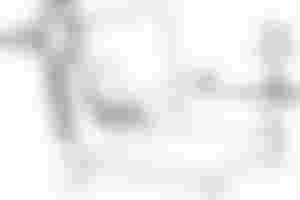
1.4. Problems of artificial walking
We will not pay much attention to the problems of artificial gait, ie walking machines, and vehicles, in this book, although it is an important part of robotics. The book primarily deals with industrial robotics, so it will only point out the main issues of the realization of artificial walking. It should be emphasized that, following the definitions of robots introduced in section 1.3, this term also includes walking machines because they perform complex movements, and the control system can provide them with some independence in terms of gait and overcoming obstacles.
All vehicles in practical use today are based on the use of wheels. The wheel was invented approximately six thousand years ago and has proved irreplaceable ever since. We will not explain the importance of wheels in all types of mechanisms but will limit ourselves to the wheel as a basic element of any means of transport intended for movement on a hard surface. Wheeled vehicles allow you to move quickly on a surface that does not have any unevenness and obstacles. To move on uneven terrain, vehicles with a larger number of wheels or with caterpillars are often designed, which represent a special variant of wheel use. The tracks, for example, enabled significantly less vehicle pressure on the ground and more efficient overcoming of obstacles on the ground. If the terrain is extremely irregular and with many obstacles, even a caterpillar vehicle cannot move on it. In contrast, humans or animals will move on that terrain without major problems. Thus, the idea of constructing an off-road vehicle that would move with its feet, that is, a walking vehicle, is imposed. The idea for making a walking vehicle did not come only from the described practical need, it also came from the constant aspiration of man to make his own copy. Consider the characteristics of a walking vehicle. The basic quality is the ability to move on complex terrain. Other features seem to show the advantage of wheels: a walking vehicle cannot move fast; the mechanical construction of the legs and their drive is very complex, and a control system that would ensure coordinated movement of the legs when overcoming complex terrain is the biggest problem. Nevertheless, the universality of movement that walking machines would achieve certainly justifies their development and improvement. Let us now consider some specific problems in the realization of artificial gaits, such as the problem of stability, coordination of leg work, and the like.

1.4.1. Two-legged and multi-legged machines
When we talk about walking machines, the question of the number of legs of such a machine inevitably arises. The number of legs is not a matter of a formal nature. This number determines the way you move and maintain balance. Closely related to this are the management problems that will ensure coordinated work of the legs in achieving a certain type of gait and especially the ility of movement. So far, work has been done on the ing and construction of two-legged, four-legged, six-legged, and eight-legged machines. Let's first analyze the problems that occur during the realization of an artificial two-legged walk. Such two-legged walking machines are called bipeds. The basis for constructing a biped lies in imitating a human gait. However, observations have shown significant differences in gait in different people as well as in the same person when walking faster or slower. However, some common features exist. With very light and normal walking, there are two phases within each step: single-arm and double-arm. In the single-legged phase, only one leg is on the ground, and the other leg is moving forward. The two-legged phase occurs when the other leg is lowered to the ground. The stroke is realized by alternating these phases. Let us now analyze the question of stability. It is usually said that a person "transfers weight from one leg to the other". This can be understood as follows. We can require that in the single-support phase the center of gravity of the body be above the surface of the foot and in the two-support phase be above the surface located between the feet (Fig. 1.8). In this way, static stability is achieved at every moment of walking. So, in any position when a man walks, we could stop without him falling.
Most of the two-legged devices realized so far use this principle. However, a person walks in such a way only with very slow movement. During normal walking, the positions of the body are such that a person would not have balance if we stopped him in that position. He would collapse. On the move, however, it will not crash. It is often said that the so-called dynamic stability is achieved when walking, ie with the participation of inertial forces. This movement, in the case of a walking machine, can be realized in the following way. We set the legs of the machine to the desired movement, and then we calculate the movement of the upper part of the body so that stability is achieved. There is a different approach. Unstable movement in the single-support phase is stabilized by the collision effect when the other leg is lowered to the ground. One practical realization of a biped is presented in Figure 1.7a2. Another practical realization is the so-called external skeleton - orthosis for paraplegics shown in Figure 1.11. Let's mention the problem of very fast walking - racing. The peculiarity of such a walk is that there is no two-stage phase. The single-support phases are separated by intervals in which neither foot is on the ground. Let us now consider the problem of four-legged gait. And in that case, several ways of walking are shown: easy walking, trotting and running. From the point of view of achieving stability, the simplest easy walk is for realization. When walking slowly, one leg moves at a time. In this way, the three legs are always on the ground and static balance can be achieved. The center of gravity should always be above the surface defined by the three feet that are currently on the ground. In the case of faster movement of the four-legged machine, we must give up the static balance and apply similar thinking as with the biped. Six-legged and eight-legged machines achieve stability much easier. The condition of static equilibrium can be provided even at higher speeds. You do not have to move one leg at a time when walking. Two legs can be found in the air at the same time, one on each side of the body, or even three legs, two on one side and one on the other.
We will consider in more detail the stroke of a six-legged machine with the movement of three legs at once. Consider Figure 1.9. The legs of the machine are marked with numbers from 1 to 6. The black circles represent the legs that are on the ground, and the empty circles represent the legs that are raised. In picture (a) all six feet are on the ground. Now the movement begins. Raise three legs (1,3 and 5 in Figure b) and move forward. The machine maintains stable support on the remaining three legs. It is a matter of static balance because in any position the machine can stop without falling. The triangular zone of the support is shown in the figure. After moving forward, the three raised legs are lowered (Figure c). Now lift the other three legs (2, 4, and 6) and move forward, and the support is on legs 1, 3, and 5 (Figure d). The concept of multi-legged machines offers great opportunities in terms of moving on uneven terrain and overcoming various obstacles.
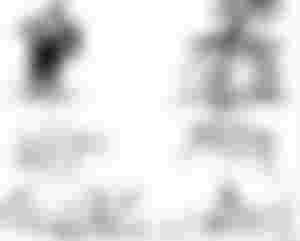
1.4.2. Management and coordination of footwork
When walking, it is necessary to ensure coordinated movement of the legs to achieve the desired way of walking, and then especially avoid obstacles. One of the first approaches that wanted to meet these requirements was applied to the American project of a four-legged off-road vehicle (Fig. 1. 7b2), and the idea was taken over by the capturing manipulators.
Each of the four legs of this vehicle had a hip with two degrees of freedom (rotation about two axes) and a knee with one degree of freedom. So, in the hip, the leg could turn back and forth and could be thrown to the side. There was one turn in the knee. Each of these movements was strengthened by a special hydraulic drive. Twelve movements, ie twelve hydraulic servo drives, had to be controlled. The idea of driving a vehicle was simple. In the cab of the vehicle, around the driver, some mechanisms represent a reduced copy of the vehicle's legs. The man guides the front two legs of that steering mechanism with his hands and the rear legs of the mechanism with his feet. He makes such movements in the cabin that the legs of the steering mechanism move as when walking on all fours. This movement is copied and transmitted to the right legs of the vehicle. In this way, the driver achieves the desired way of walking the vehicle. He can put his foot in the place he chooses, avoid obstacles, unevenness on the surface, etc. The control channels were two-way so that the driver could feel the force of resistance when his foot touched the ground.
Such a system enables more efficient machine control. So, the principle of control of this walking vehicle is the same as with copy manipulators. The management idea described was quite tempting and simple, but in practice, t was not easy. The vehicle did not enter into practical application. An automatic leg guidance system was applied to the bipedal orthosis shown in Figure 1.11. By recording the way a healthy person's legs move, the path that needs to be achieved has been reached. That path is stored in the computer. The electric servo-system wrote ensured the execution of the memorized movement. This led to the desired way of walking. The patient - the user of the orthosis, maintained balance by moving the upper part of the body. When you encounter an obstacle (for example, stairs), it is necessary to activate a program that will provide a new way of walking. The program was previously prepared and memorized. Obstacle detection can be either by the user or automatic, ie. using sensors. This method of control via programmed travel is also used in transport walking machines.
We will show a slightly different approach on the example of a medical robot - leg prosthesis or orthosis, although the same principle can be applied to a wider class of walking machines. The previous approach is based on a servo system that achieves a predetermined movement. This could be called the standard engineering approach. It involves measuring the condition of the device or, more precisely, finding numerous values of position and speed. The second approach involves the use of qualitative information. The sensors provide information based on which categories can be formed, such as hard surface, soft surface, road obstacle, and the like. The computer's memory contains memorized behavioral procedures in each of these cases. These procedures are formed in the learning process as a kind of experience. When the device recognizes any of the mentioned cases in a real situation, the appropriate algorithm is activated from the computer memory that implements the behavior. It is not necessary to achieve strictly defined paths, but the condition of the prosthesis can be viewed discretely. Several important conditions are observed, such as the need knee, bent knee, etc. The path between these states is not considered particularly significant and can be formed in different ways (for example, by optimization). The demand for increased autonomy of robotic systems, even walking machines, has led to a series of procedures for the detection of obstacles and the shape of the surface, as well as different approaches to controlling the work of the legs.
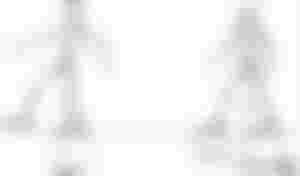
1.5. Development of robotic systems
It is often said, as we have already said, that modern robot was created by combining copying manipulators and numerically controlled machines, taking a more or less human-like hand from the manipulator, and a computer-controlled control system from the numerically controlled machines. This obviously applies to industrial manipulation robots that are always equipped with an arm-shaped actuator. They were, therefore, developed as an extension and improvement of production machines intended for moving parts in production and servicing machines. Robotic systems have evolved independently and from the standpoint of other uses. The development of robotics for medical purposes is especially important. This development has a wider significance than a dical application because the work on the realization of foot orthoses and prostheses led to the theoretical analysis of artificial bipedal gait, and later to the development of the general theory of robotics.
An important place in the development of robotics is the work on the realization of walking transport vehicles. These researches were oriented towards multi-legged artificial walking. Today, these three orientations in robotics cannot be easily separated. Manipulation robots are important for both industrial and medical applications. In industry, they work on production lines, and in medicine, they represent orthoses or hand prostheses. It is similar to the artificial leg, which is used in medicine, as well as in walking transporters. We can already see the merging of these orientations from these rough comparisons, however, they still retain some of their specifics, which were discussed at the beginning of this chapter (section 1.1).

1.5.1. Medical robotics and walking machines
We will give an overview of some realizations which, regardless of whether they proved to be successful in the end or not, remained noted as important in the development of robotics. The presentation is not chronological, and it is not possible to show all the realizations that deserve it. In Figure 1.10. the so-called Belgrade fist is shown (R. Tomović and M. Rakić, Belgrade). The fist was able to make two movements: squeezing into a fist and squeezing with outstretched fingers. So, she could perform two key actions performed by a human hand. In Figure 1.11. the active external skeleton is shown (M. Vukobratović, Belgrade). It was an orthosis intended for people with deprived legs. The outer skeleton achieved the given movement of the legs with the help of the engine, and the user-maintained balance by moving the upper part of the body. Ortiz is made in the variant of hydraulic and in the variant of the tric motor drive.
A two-legged walking machine (I. Kato) was also realized in Japan. The machine (Fig. 1.7a2) could move straight, and also turn in place. It consisted of legs that moved according to the given law, and instead of the upper part of the body, it had an inverted pendulum that was tilted to the left or right, if necessary, to maintain balance. The movement was based on static balance when walking slowly. The drive of the machine was hydraulic.
Figure 1.12. shows a four-legged machine called a California horse (R. To-mović, R. McGhee, and A. Frank) realized in the USA. The machine powered by an electric motor could perform two types of movement; gait, when three feet are on the ground thus achieving static stability, and trot. The machine is realized based on a finite automaton.
In section 1.4.2. a four-legged off-road vehicle (R. S. Mosher, R. A. Liston, General Electric Company) is described. The appearance of the vehicle is given in Figure 1.7b2.
A simplified model of a walking machine (Fig. 1.13) composed of two legs and two wheels were constructed to examine the possibility of moving over obstacles (E. Devijanin and AV Lenski). The machine successfully overcame obstacles about 10% of the length of the legs automatically. In Figure 1.14. a six-legged walking machine (M. Ignjatiev, Leningrad) constructed for walking experiments on irregular terrain is shown. The drive of the machine was hydraulic.
We should also mention the work of T. Okacimsky's group in Moscow with several models of walking machines. At this point, we should also look at the development of robotics theory. Many projects have been realized without relying on some complex theory. There was no one complete theory of robotic systems, so researchers relied on the existing theory of automatic control. Despite that, the realizations were very successful. From the point of view of the theory, the key results were achieved in 1970-1973. when mathematical models of the manipulation mechanism and two-legged walking learning machines were formulated for the first time (J. Stepanjenko, Moscow, and M. Vukobratović, Belgrade). For some time, the theory and practice of robotics were developed separately to finally meet. Every modern project in robotics is preceded by a thorough theoretical analysis that includes dynamic analysis, simulation, and computer design.

1.5.2. Industrial robotics
An industrial manipulation robot is a device equipped with a mechanical arm with great possibilities of movement and a control system with great autonomy realized on a digital computer. Such a robot represents today's endpoint of the development series of industrial automata. We divide industrial robots into three generations based on the extent to which the main determinants of robots are expressed: the reality of movement and autonomy in work. Before we present the characteristics of the first generation of robots, let us mention industrial automata that perform given movements by providing starting and stopping with switches or mechanical stops. Although by some definitions these devices are also classified as robots, today it is generally accepted that such automatic manipulators are not robots because their universality and the possibility of reprogramming are very limited. First-generation robots can automatically repeat a given movement. In fact, it is not just one specific movement, but an arbitrary movement that is given to the robot via, for example, a record on a magnetic tape. A new task implies a new program. This exhausts the possibility of communication with the robot, and its independence is reflected in the precise automatic repetition of a given movement. With these robots, we find two ways to remember a given movement. In older types, the robot remembers a certain number of positions using the appropriate number of potentiometer groups located on the control panel. Each group of potentiometers remembers one position of the robot so that one potentiometer from the group remembers the displacement value of one moving joint. In the case of the robot in Figure 1.15. the first potentiometer in the group remembers the angle θ, the second remembers the height z, and the third remembers the elongation of the arm ρ. In automatic mode, the robot will move from one position to another, and the path between these positions cannot be controlled. Later, this approach was modernized. The points where the robot should come are set with the help of a magnetic tape. At that time, it was possible to set the path between individual operating points in space, and also to set the speed of movement.
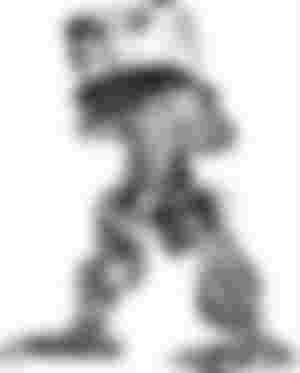
First-generation robots are also called playback robots. In free translation, that would mean repeating robots, because they repeat a given movement. In the case of point-to-point movement without the possibility of controlling the movement between points, the English term "point-to-point" control is used, and in the case of continuous tracking, the English term is "continuous path control".
As we can see, the first generation robots provide considerable opportunities to perform various practical tasks. However, regardless of their automatic operation, their independence is still limited. We will show it with one example. We will imagine a task in which a robot would take objects from the production line and leave them in the places provided for that. The robot will do this job successfully as long as the items it picks up in specific places, the places where the items are stored are empty, and so on. Any disturbance of working conditions will prevent the robot from performing the task. It is enough that the object that is caught is not placed in the intended place quite precisely, or that an obstacle appears in the work area. For a robot to be able to cope with such unforeseen situations in the workspace, it must be equipped with senses. With their help, they will receive information and examine the conditions in the workspace, and they must also have programmed procedures of behavior, ie coping in certain situations. This is how we come to the second generation robot. We will say a few words about the senses of robots, ie information providers or sensors. We already find information providers in first-generation robots. These are devices that measure and give information about the mutual position and speed of the moving parts of the robot's hand. Thus, the robot received information about its position and we call these sensors internal. Second-generation robots must also receive information about space and the things that surround them. This is what the providers of so-called external information are for. Here are a few examples. The robot gripper is usually made in the shape of pliers, ie a fist with two fingers. Encoders can be placed on the inside of the gripper to register contact with the object being grasped, giving the robot information on whether it has grasped the object or the gripper has been squeezed "empty". A more complex sensor would also measure the force with which the gripper grips the object. Touch sensors can also be placed on the outside of the handle to register contact with any obstruction. There may also be photodiodes on the front of the gripper that will register the approach of any object or obstacle. Through the encoder, the robot receives information from the workspace, and based on it makes decisions about its further behavior. Such a robot must have a computer that will receive information and make decisions. Obviously, such systems allow the robot to react in some cases of disturbances of working conditions. If, for example, there is no item to be taken from the production line, the robot will register it and then wait for the next item to arrive. If he encounters an obstacle, he will "feel" it bypassing it. These robots are characterized by this "touching" procedure, ie solving problems that contain a certain dose of unpredictability by the test method. We will show with one example of a robot that does some more complex work with this procedure. et these be the parts that need to be picked up scattered on the surface, without knowing their exact position. The robot would start searching the surface by moving the grip left and right and slowly forward. When it encounters any of the parts, it will register the touch sensor. The robot will catch that part and bring it to the place intended for its disposal. The robot will then return to the position where it found that part and continue the search. Second-generation robots can perform very complex tasks and, thanks to elements of artificial intelligence, they have the ability to cope in some unpredictable situations. Unlike first-generation robots whose goal was to perform a certain movement, second-generation robots have the goal of performing a task and can, if necessary, change their movement to achieve that goal.

We can say that in unpredictable situations, the behavior of the second generation robot is somewhat similar to the behavior of a blind man. He cannot observe the situation, then make decisions, and only finally start moving. He collects information along with the movement and makes decisions immediately. Third-generation robots are capable of separating the process of gathering information and making a decision from the later movement by which decisions are implemented. Let's show this on the example of parts scattered on the substrate. The third generation robot works as follows. The television camera records the background, and the computer analyzes the image and concludes where the parts to be picked up are and how they are oriented. It then determines the order of collection that allows for the fastest execution. However, if the parts are different, and the order of collection is important, then the computer will recognize each of the shapes when analyzing the image. After this reception and analysis of information, the robot starts to perform the task, ie. assembling parts. Let's also mention that robots can be equipped with a remote control, sound information sensors, and the like. This wealth of information that the robot receives requires very complex algorithms for their processing. Therefore, the further development of robots is essentially related to the development of artificial intelligence methods, where, among other things, we include methods of shape recognition and speech recognition. Some future generations of robots will surely have more and more perfect senses and more perfect artificial intelligence.

When we talk about the historical development of industrial robotics, we list some other important moments chronologically:
Copy manipulators and teleoperators for working with radioactive materials developed in the late 1940s and early 1950s;
In 1952, the Massachusetts Institute of Technology (MIT) introduced the first numerically controlled machine;
In 1954, the first robotic device was patented in Great Britain - a manipulator with numerical control (C. W. Kenward);
In 1954, a device was originally designed in the United States under the original name "programmed article transfer" or, in free translation, a system for programmed transfer of objects (George C. Devol). In 1960, Unimate (headed by J. F. Engelberger) produced the first robotic device according to this project.
1.6. Robots in industry-Flexible automation
Robots have entered factories to achieve higher production productivity. They started with simpler operations and moved on to more complex ones. Today, the fields of industrial application of robots can be divided into four categories:
material transfer and machine maintenance,
process operations,
assembly work (assembly),
product control activities (inspection).
The first category of jobs is characterized by the fact that it is necessary to catch the object and transfer it to the required place. Sometimes it is just a matter of simply moving the parts in the production process, and sometimes it is necessary to put an object in the machine or take it out of it, and then we are talking about servicing the machine. Typical examples are press or lathe service.
Older, less perfect robot models could also solve simpler problems from the domain of the first category. For example, servicing the press comes down to taking a workpiece from a certain place, placing it under the press, and finally, after pressing, disposing of the object in the intended place. If the workpieces always arrive at a precisely determined place from when the robot will pick them up and if the same cycle is required to be repeated, then the whole operation can be performed by a robot with a fairly simple drive and control system. It is not necessary to use servo-systems, but a simple (eg pneumatic) drive can be used, and stopping in the desired position can be achieved by setting mechanical stops. The displacement in each joint is determined by the stops that stop it. Different positions of the robot are provided by changing the position of the stop. Due to this way of setting the position, these manipulators are characterized by great precision. Obviously, with devices like this, a lot

is complicated to change the zone of movement. Namely, it is necessary to move the stoppers for each joint. That is why these devices today can hardly be called robots. Modern robots are designed so that they can serve all types of machines. By simply changing the program cassette, we will reorient the robot from servicing the press to servicing the lathe or some other machine, change its working zone, speed, etc. The second category consists of jobs in which the robot carries a tool or device with which it performs a certain production operation on the workpiece. Typical examples from this category are spot and seam welding, spray painting, sanding, polishing, etc. These tasks also have different complexity of tasks. Spray painting requires less precision than welding. Then, with spot welding, it is enough to move from point to point, while with welded welding, it is necessary to follow a continuous path. Finally, when grinding and polishing, it is necessary to control the pressure force on the workpiece. The third category includes the assembly problem. The robot is used to assemble different, simple, r more complex, assemblies. A task that is often set in the assembly is to insert an object of a given shape into the appropriate opening. In theoretical considerations, such an assembly task is generally used. Assembly work has almost entered the domain of robot applications. This is a consequence of the complexity of the requirements that are set: high precision, control of the forces that occur during assembly, etc. This application of robots often involves visual systems. Finally, in the fourth category, robots perform control tasks. This application is closely related to the development of all types of sensors: tactile sensors, ultrasonic and laser devices, and finally all types of visual systems.
In the initial phase of the application of robots in industry, they mostly performed those jobs that are monotonous, that are performed in unhealthy conditions, and the like. In general, these are jobs from which it is desirable to free a person, so robots have a certain role in the humanization of work. However, it should be said that robots were not introduced into the industry primarily for human, but for economic reasons. Robots are very productive, they work in multiple shifts, they work at a steady pace, they make a little scrap. Simply put, an oduction involving robots is cheaper. In today's industry, which is dominated by large-scale production, any reduction in production is very significant. Consider a special issue of batch size in industrial production. We say that today it is still dominated by large-scale production, which is considered a condition of the army. Most of the production facilities of today's industry are adapted to such production. Such automated production lines are called fixed automation. These lines and the complete equipment on them are intended for the production of only a certain product. Every change is a complex problem. Given the large investments in the formation of such a production line, it becomes profitable only in the production of large batches. The second condition is that the product is up to date for a longer period of time because, after the cessation of production, the hired equipment can hardly be used for other purposes.
Experts believe that there will be significant changes in the domain of batch size shortly. Market conditions are already beginning to dictate production in small batches in many areas, sometimes only a few dozen pieces. It is believed that this tendency to reduce the series will continue and a large part of the industry will have to reorient to the production of small series and frequent changes in the subject of production. Thus, we come to production systems that quickly adapt to changes in the production program and even have the ability to simultaneously produce different products. Such systems are called flexible manufacturing systems or flexible manufacturing. For the same reasons, we call this way of automation flexible automation. For such production-oriented to small series and especially capable of quickly conquering new products, more conditions are necessary. The first condition is efficient and fast design, which means the use of computer-aided design (English CAD, ie computer-aided design). These methods usually involve programs that can quickly perform complex calculations and checks on future products. More complex CAD systems can provide the necessary constructive solutions, ie design, based on set design requirements. Most CAD systems are somewhere between these two possibilities. They consist of calculation and verification programs and communication programs that allow the user to easily operate the entire software system. The logic of designing is built into them so that in the interactive work the user (designer) quickly comes to a solution. Computer graphics capabilities are widely used in such systems. Another condition for flexible production is the production line itself, which is capable of adapting to different products. These are highly automated lines with large use of robots. The previously emphasized universality of robots from the point of view of the possibility of performing various operations comes to full expression here. They greatly contribute to the ability of products to adapt to different objects of production.
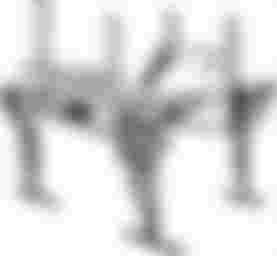
Let's illustrate with one example of the application of robots significantly affects the flexibility of production. The automotive industry is mainly based on fixed automation. Engine or transmission system parts and traps are produced in this way. It is similar in the process of assembling the engine, etc. Consider, however, the body welding process. Thanks to robots, this process is very flexible. The same robotic line can weld different body types with a simple program change. Flexible production means computer control of the whole process. And not only that. Computers manage production preparation, product control, storage, and transportation. With the wide application of computers in market processing and modern computer-aided design systems, we come to the concept of computer-integrated manufacturing (English CIM, ie computer-integrated manufacturing).
Robots have become an indispensable factor in modern industrial production.
The author
@Andjela99






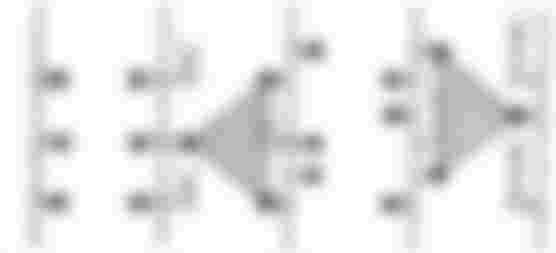



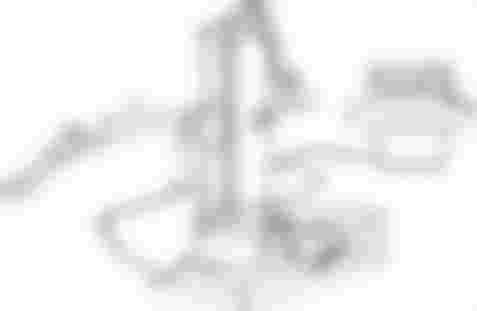

Robot will be helpful but sometimes dangerous